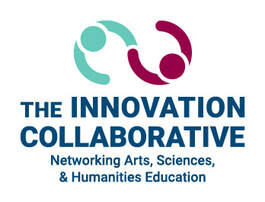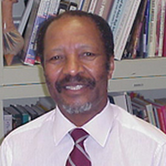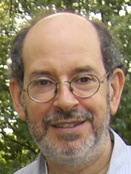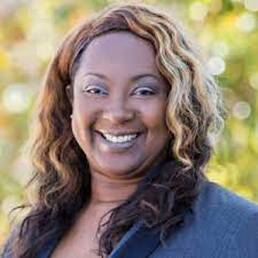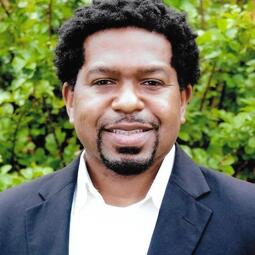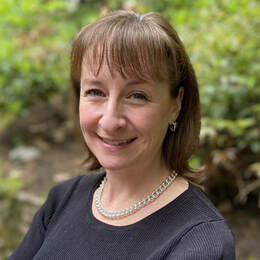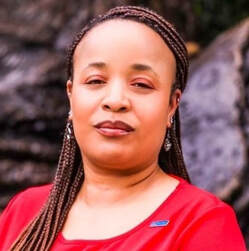|
The Collaborative’s Research Thought Leaders help provide the strong research foundation upon which the Collaborative’s work rests. Each Thought Leader is nationally and internationally recognized in their own field and brings an extensive depth of experience and expertise. They also are adept at working across disciplines. In our previous newsletters, we brought you interviews with each of our Thought Leaders and also examined ways to apply their important ideas in STEAM learning. This new series showcases conversations between various Thought Leaders around an important and relevant topic. The spring and fall, 2022 newsletters featured a conversation about creativity and innovation between Neuroscience Thought Leader Sandi Chapman, PhD, and Creativity Thought Leader Bonnie Cramond, PhD. Sandi Chapman is Founder and Chief Director of the University of Texas at Dallas Center for BrainHealth. Bonnie Cramond is Professor Emerita of Educational Psychology and Gifted and Creative Education at the University of Georgia. This article builds on those conversations between Chapman and Cramond. It is an interchange with important observations about creativity from the Collaborative’s Science Thought Leader Hubert Dyasi, PhD, and Arts Thought Leader Rob Horowitz, EdD, both of whom are leaders in their own fields. Hubert Dyasi is Professor of Science Education, the City College, City University of New York (CUNY) – retired. He is known for the teaching and learning of science in pre-college education in the US and in Africa (see newsletter for information about him and his recounting of how curiosity led to science centers across Africa). Rob Horowitz is Executive Director, ArtsResearch, and Associate Director, Center for Arts Education Research, Teachers College, at Columbia University. He is well-known for his arts education research that demonstrates the important relationships between in-school arts learning and cognitive, social, and personal competencies (see newsletter article for resources and information about him). In this interchange of ideas, you will see important commonalities between science and the arts in relation to the use of creative thinking. Hubert Dyasi: One of the major aspects of all science is the creation of science-based mental models that successfully explain and predict events in nature. Yet science lessons in schools seldom provide multiple rich opportunities for students to engage in meaningful development and critique of mental models. That is unfortunate. I believe the impulse to create mental models is an integral part of human development and the desire to understand the world. In other words, all humans, including children, cannot help but create mental models in efforts to explain and understand their worlds. If we consistently use that impulse as a motivating factor in teaching and learning, we will have a firm foundation for cultivating understanding and creativity in students’ learning regardless of the school subject. The challenge in science education, specifically, is how to make students’ creation of mental models a staple of science learning for all students. Rob Horowitz: As Hubert and I often have found in our conversations, there is more commonality between the work of scientists and artists than differences. Developing mental models – and testing and revising them – is inherent to the artistic process, although the medium might be aural, sensual, visual, or kinesthetic, rather than linguistic and logical. These are processes inherent to our humanity, and not just the domain of those who are defined by the presence or absence of “talent". Children – and adults, for that matter – make meaning and understanding of their world through engaging the senses, seeking patterns, adding to previous knowledge through adjusting their mental models, and then seeking to express their understanding, ideas, and feelings. Their ensuing representation is “art”, for want of a better word. Hubert Dyasi: Building upon students’ impulse to create mental models also implies utilizing it to cultivate their creative capacity to raise questions that interest them, refine them in a manner that makes them scientifically investigable, and to design ways to answer them; for example, creativity about what data to collect, how to collect them, how to organize and interpret them, and about how to communicate them clearly and interestingly. If students grapple with their own thoughts and ideas to perform these tasks, they engage in creative activity. From banks of data analyses they have done, they learn to see patterns from which they create testable mental models — models they can use to explain and to predict events in specific aspects of their worlds. In other words, they learn to develop mental models based on data that meet standards of evidence in science. Rob Horowitz: I am still seeking to find differences between the artistic and scientific modeling processes — perhaps Hubert’s notion of testable mental models that can predict events can lead me to an answer. I will have to adjust my own mental model of artistic creation to consider this. Hubert Dyasi: By their very nature, mental models created from data based on science practices have “successes” and “failures.” As students encounter more events and generate more data, they might find discrepancies in their models; the discrepancies invite them to design ways to revise and refine the models. The resulting mental models are creative to the extent they are new to the students, and/or combine objects and ideas in ways that are new to them; it doesn’t matter that grownups might already know them. Rob Horowitz: The mental models are revised as the learner stays open to new information. That “resistance to closure” and task persistence is an asset as children develop and revise their models. One difference with the performing arts is the temporal quality, where revisions are made quickly, in real time, as rhythm and phrasing, dance steps, improvisations, or actor’s delivery are adjusted in real time in response to their community of fellow performers (and audience). Perhaps this is a key difference between the arts and sciences: the need to adjust the communication and artistic representation in response to others. Although I suspect Hubert will summon a parallel process in scientific exploration, such as the need to establish safe and nurturing classroom environments – or laboratories – that support open exploration and representation. Hubert Dyasi: It is important to note once again that embedded within creating mental models are other elements of creativity, e.g., self-created ways to represent and to communicate the models, and design of model-testing situations and devices. In these activities, students also gain a useful insight into science that it is a self-correcting system of studying phenomena of the world. None of these levels of creativity, however, can occur in classrooms without satisfying preconditions such as a psychologically safe classroom environments where students are comfortable expressing their ideas and creativity, and supportive curricula and assessments. A special thank you to Hubert and Rob for these enlightening insights that help us see that the boundaries between the sciences and the arts are transcended in many important ways.
0 Comments
The Innovation Collaborative is proud to announce new Innovation Fellows who have been invited by the Board of Directors to join the Collaborative’s work in K-12.
Innovation Fellows are top K-12 administrators and arts, STEM, and classroom teachers from across the US who are influential STEAM advocates. They are the planning team who help lead the Collaborative’s K-12 Effective Practices project that focuses on classroom practices and teacher professional development. The Collaborative’s initial Fellows were identified in the first round of national K-12 STEAM research. Additional fellows are invited to join this group, based on their impressive abilities to move the K-12 STEAM field forward through teaching and administration. These new Fellows are impressive in their own right.
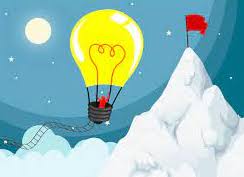 How do research and perspectives on imaginative thinking in STEM education and practice relate to STEM learning in museums? That was an important question asked by the Museum of Science (MOS), Boston, in a project funded by the National Science Foundation’s (NSF) Advancing Informal STEM Learning (AISL) program. To address this question, the MOS team, led by Becki Kipling, Principal Investigator, and Christine Reich and Sarah May, Co-Principal Investigators, brought together researchers, practitioners, educators, and others for a series of convenings. There were rich conversations about imagination between Informal Science Education (ISE) professionals and between ISE professionals and those from other domains. The Collaborative was included in these convenings. Many important insights were gained. Enriching this work are a recently released literature review, a survey of ISE professionals, and a number of other products related to this topic. These can help identify and stimulate future areas of research. See these rich Museum of Science, Boston resources to learn more about the convening’s proceedings, a framework for defining imagination in STEM, and a number of other important resources. You can find project descriptions from 25 unique projects that use imagination in a variety of ways in the Project Index. You can find the YouTube playlist at Unpacking the STEM Imagination Convening YouTube Playlist. See also the Research Thought Leader article in this newsletter where the Collaborative’s Science Thought Leader, Hubert Dyasi, PhD, and its Arts Thought Leader, Rob Horowitz, EdD, discuss how creative thinking (which includes imagination) bridges the science and the arts. 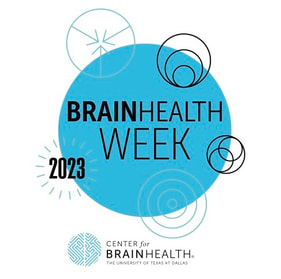 The Collaborative recently participated as a Community Partner in the highly successful BrainHealth Week sponsored by the University of Texas at Dallas Center for BrainHealth. Held February 20-24, BrainHealth Week was a free of charge five-day interactive event where people of all ages were shown how to build habits that promote a healthier brain and improve the trajectory of their lives. This included both in-person and virtual experiences with expert speakers, engaging activities, and access to brain health habits that can become part of one’s daily routine. The Center for BrainHealth’s Chief Director, Sandi Chapman, PhD, is the Collaborative’s Neuroscience Research Thought Leader who, along with three other Thought Leaders, help lead the Collaborative’s work conceptually. Through Sandi, the Collaborative’s work centers on vital research-based thinking skills that the Collaborative shares with students and teachers across the US. According to the Center for BrainHealth, “cognitive neuroscience suggests that the trend of worsening brain outcomes, such as decline, disease, mental health disorders, despair, loneliness, and brain fog can be reversed. Healthier brain habits can change this. Intelligence, memory, cognitive function, and even mental health can be impacted by how we protect and train our brains. In a groundbreaking study of 187 adults of all ages, 80% saw an improvement in their BrainHealth index scores (a scientifically validated measure the of the brain’s holistic health and fitness). Participants who engaged the most with proactive brain health strategies experienced the largest gains.” The cognitive neuroscience conducted at the Center for BrainHealth and other leading research institutes around the world clearly demonstrates that our brain’s health and performance can be affected by daily, proactive practices. When talking about Brain Health Week, Sandi said, “At the Center for BrainHealth, we are uniquely devoted to discovering and applying the latest scientific findings about the brain’s ability to change based on how we use it.” She added, “What good is science if people don’t know how to use it to make their lives better”? You can find out more about how you can maximize your brain’s capacities at BrainHealth. 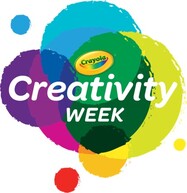 Crayola Creativity Week Crayola recently held its highly successful Creativity Week. It engaged 3.5 million children and 195,000 teachers in 77 countries. In talking about Creativity Week, Crayola Director of Education, Cheri Sterman, said, “At Crayola Education we strive to give children, educators, and parents resources and inspiration to help them create and learn, opening their imaginations so they can pursue their dreams. Within Crayola Creativity Week, we collaborated with many organizations and creative spokespersons to inspire kids around the world, including NASA, Penguin Random House, HarperCollins Publishers, Sony Pictures Home Entertainment, KIDZ BOP, GoNoodle, Khan Academy Kids, National Art Education Association, American Association of School Librarians, World Reader, Code.org, and the YMCA. Getting the word out about the power of creativity to help kids learn was a major objective of the celebration. Crayola is thrilled that the public tuned in to this message, with 615 million media impressions!” Celebrity presenters included astronaut Ricky Arnold, who started his career as a middle school science educator and told kids how he needed creative thinking to be both a teacher and an astronaut, and Today Show meteorologist Dylan Dreyer, who talked about how creativity has been the guiding force in all her career decisions. Visit the Creativity Week website for a wealth of teacher and parent resources. These include videos, read alongs, Thinking Sheets, creative challenges, and more. 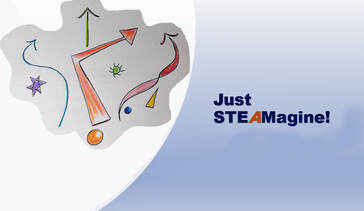 STEAM Imagination By Merrie Koester, PhD, Collaborative Advisory Council Member Pre-pandemic, I received a surprising email from education researcher, philosopher, and editor Dr. David Flinders: Dear Dr. Koester, You have been invited to submit a commentary for Routledge Encyclopedia of Education. I would be grateful if your commentary were entitled "Science Curriculum." To say I was stunned by the invitation would be an understatement. First of all, the challenge to write an encyclopedia entry of any kind implied I had the authority to do so. Does anyone? I also recalled believing as a child that the World Book Encyclopedia was a Great Repository of Truth. And then I reflected on the problem of names and the energy of language. To name something is to stake a claim of knowing its signification. This is a responsibility the Innovation Collaborative has not taken lightly as we’ve labored over what we “mean” when we say STEAM, creativity, innovation, transdisciplinary, etc. Next, I thought about how this this human endeavor we call Science is not about getting things right, but rather about getting them less wrong, using the best evidence available to one at the time. Similarly, the Innovation Collaborative’s work—the research and the practices—don’t just tell what STEAM is, they SHOW how STEAM thinks and performs! Next, I thought about how this this human endeavor we call Science is not about getting things right, but rather about getting them less wrong, using the best evidence available to one at the time. Similarly, the Innovation Collaborative’s work—the research and the practices—don’t just tell what STEAM is, they SHOW how STEAM thinks and performs! As background, I was invited to present a paper at the 2016 American Educational Research Association (AERA) conference for a session called Eisner in Mind: Fresh Perspectives on Inquiry and Education. During my talk, entitled “Imagination and the Arts as Antidotes for STEM Education Malaise and Alienation”, I recalled scientist James Trefil’s writing about “The Great Turn Off” to school science, a disheartening event that occurs sometime around middle school and which Trefil attributed to a near total lack of creativity in traditional science teaching. I didn’t need to convince this room of creatives at AERA that something needed to be done! Like Trefil, I lament the dire consequences of a science illiterate nation. Making science accessible and meaningfully engaging to all students is an ill-structured problem at best, one beset with issues of power, culture, and privilege, and the ever-present requirement that students meet performance benchmarks on content knowledge standards. When a science class is named a STEAM studio, students get to see that the very act of doing science requires a curious, creative mind and heart. Through noticing, listening, attending, and personal story-making – leaning in – science learning begins to matter. And so I accepted the challenge from Routledge, but respectfully asked (and was approved) to change the entry’s title to “Progressive Science Education Curriculum.” I also asked if my colleague, Dr. Meta Van Sickle, might join me as a thought partner. Between us, Meta and I have devoted over sixty years to the research and practice of “Science Curriculum” as a “creative making practice”, decades before anyone named STEAM as educational practice. In 2018, Meta and her colleague, Dr. Judith Batzler, working with IGI, edited Cases on STEAM Education in Practice, to which I also contributed. Gradually, the work for Routledge progressed, in just the same messy, organic way that all creative making requires. During the pandemic, the publishers themselves got creative with the platform, deciding to launch the project under a new name, Routledge Resources Online — Education, in order to better describe the scope of the product and to pivot to an increasingly virtual, post-pandemic world of readers. And now, I’m happy to share that at long last, Progressive Science Education Curriculum has been published! Being part of this incredible collective called the Innovation Collaborative has fueled my hope that we may have finally arrived at a time when we can design and put into practice truly educative and progressive models that provide joyful time and space for creative making and thinking. The Collaborative outreach/research is providing strong evidence to support the claim that STEAM learning experiences, those that are inclusive, empowering, emergent, and creative — not just numbers-based, procedure-driven, and geared toward mastery of knowledge that will be on a test — matter! Just STEAMagine where we’ll go from here! Merrie Koester, Ph.D. Science Literacy, Communication, and STEAM Curriculum Specialist University of SC Center for Science Education Founder, Director, Kids Teaching Flood Resilience 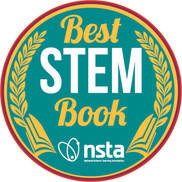 Best STEM Books for 2022 In fall 2022, representatives from the National Science Teaching Association’s Children’s Book Council and from other disciplinary groups met for the sixth time to select exemplary children’s literature in STEM. Since 2014 this joint committee has sought out literature that represents the best of STEM through:
It’s important to note that the criteria above do not require science content—even if it is integrated across disciplines. The best STEM books might represent the practices of science and engineering by:
Some of these books might not cover STEM content at all. They might simply define STEM habits of mind. For example, a biography might be STEM if it shows creative thought, progressive improvement, and even struggle and failure. But just telling a sequential story of achievement in a biography would not make it a STEM book. A winner would have to provoke a sense of innovation in the reader in any genre. All the winners are interdisciplinary in some way: Content, process, and field of endeavor. The list below attempts to classify them, but, of course, the greatest STEM achievements defy classification. Biographies Classified: The Secret Career of Mary Golda Ross, Cherokee Aerospace Engineer Traci Sorell Building Zaha: The Story of Architect Zaha Hadid Victoria Tentler-Krylov A Life Electric: The Story of Nikola Tesla Azadeh Westergaard Benoit Mandelbrot: Reshaping the World Robert Black Secrets of the Sea: The Story of Jeanne Power, Revolutionary Marine Scientist Evan Griffith Thank You, Dr. Salk!: The Scientist Who Beat Polio and Healed the World Dean Robbins The Stuff Between the Stars: How Vera Rubin Discovered Most of the Universe Sandra Nickel Wonder Women of Science: Twelve Geniuses Who Are Currently Rocking Science, Technology, and the World Tiera Fletcher and Ginger Rue Inventions Awards also were given to books about inventions and the process that multiple inventors went through. Bicycle: Eureka! The Biography of an Idea Lori Haskins Houran Light Bulb: Eureka! The Biography of an Idea Kathleen Weidner Zoehfeld A Shot in the Arm: Big Ideas that Changed the World #3 Don Brown From Here to There: Inventions That Changed the Way the World Moves Vivian Kirkfield Glasses: Eureka! The Biography of an Idea Lori Haskins Houran Engineering Engineering is prominent in the list, with familiar projects conducted in innovative ways. Uma Wimple Charts Her House Reif Larsen Maxine Greatest Garden Ever Ruth Spiro Someone Builds the Dream Lisa Wheeler Mimic Makers: Biomimicry Inventors Inspired by Nature Kristen Nordstrom Mathematics And mathematics is not a tool but a science in itself. Look, Grandma! Ni, Elisi! Art Coulson Molly and the Mathematical Mysteries: Ten Interactive Adventures in Mathematical Wonderland Eugenia Cheng Luna's Yum Yum Dim Sum Natasha Yim Computer Science Coding becomes science, too. Artificial Intelligence Dinah Williams Coding as STEM Coding is both language and science in more award-winning books. What Is Nintendo? Gina Shaw Code Breaker, Spy Hunter: How Elizebeth Friedman Changed the Course of Two World Wars Laurie Wallmark The World Around Societal and environmental problems become the theme for more award-winning books. Amara and the Bats Emma Reynolds A Shot in the Arm: Big Ideas that Changed the World #3 Don Brown Scene of The Crime: Tracking Down Criminals with Forensic Science Hp Newquist Bones Unearthed (Creepy and True #3) Kerrie Logan Hollihan Cougar Crossing: How Hollywood's Celebrity Cougar Helped Build a Bridge for City Wildlife Meeg Pincus Upstream, Downstream: Exploring Watershed Connections Rowena Rae Lady Bird Johnson, That's Who!: The Story of a Cleaner and Greener America Tracy Nelson Maurer Race to the Bottom of the Earth: Surviving Antarctica Rebecca E. F. Barone The Great Stink: How Joseph Bazalgette Solved London’s Poop Pollution Problem Colleen Paeff Scene of The Crime: Tracking Down Criminals with Forensic Science Hp Newquist Selling STEM Invention extends to entrepreneurship. Eat Bugs! #1: Project Startup Heather Alexander Innovative books lead to innovative, integrated curricula. For more information on each award-winning book, go to Best STEM Books K–12 2022 | NSTA  Online STEM Resources Resilient Educator is an online resource that accumulates STEAM ideas and resources for teachers. It includes current grant opportunities, research, conferences, and lesson plans. “Curricula opportunities range from taking planned STEM lessons and adding in an arts component or perspective, to developing STEAM plans that fully integrate arts education from the very start.” STEAM Teaching Resources for Educators | Resilient Educator 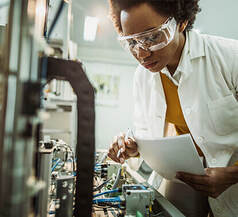 Celebrating Black History Month Black History includes a great STEM star: Actalent is again celebrating Black History and STEAM with the 37th annual Black Engineer of the Year Award (BEYA) STEM Conference Celebrating Engineering Excellence - BEYA 2023 (actalentservices.com)  NSTA Conference Features STEAM Sessions The National Science Teaching Association meets in Atlanta beginning March 23. The program is available online, with many sessions addressing disciplinary integration such as STEAM. To find out more, visit the conference website: https://www.nsta.org/atlanta23 |
